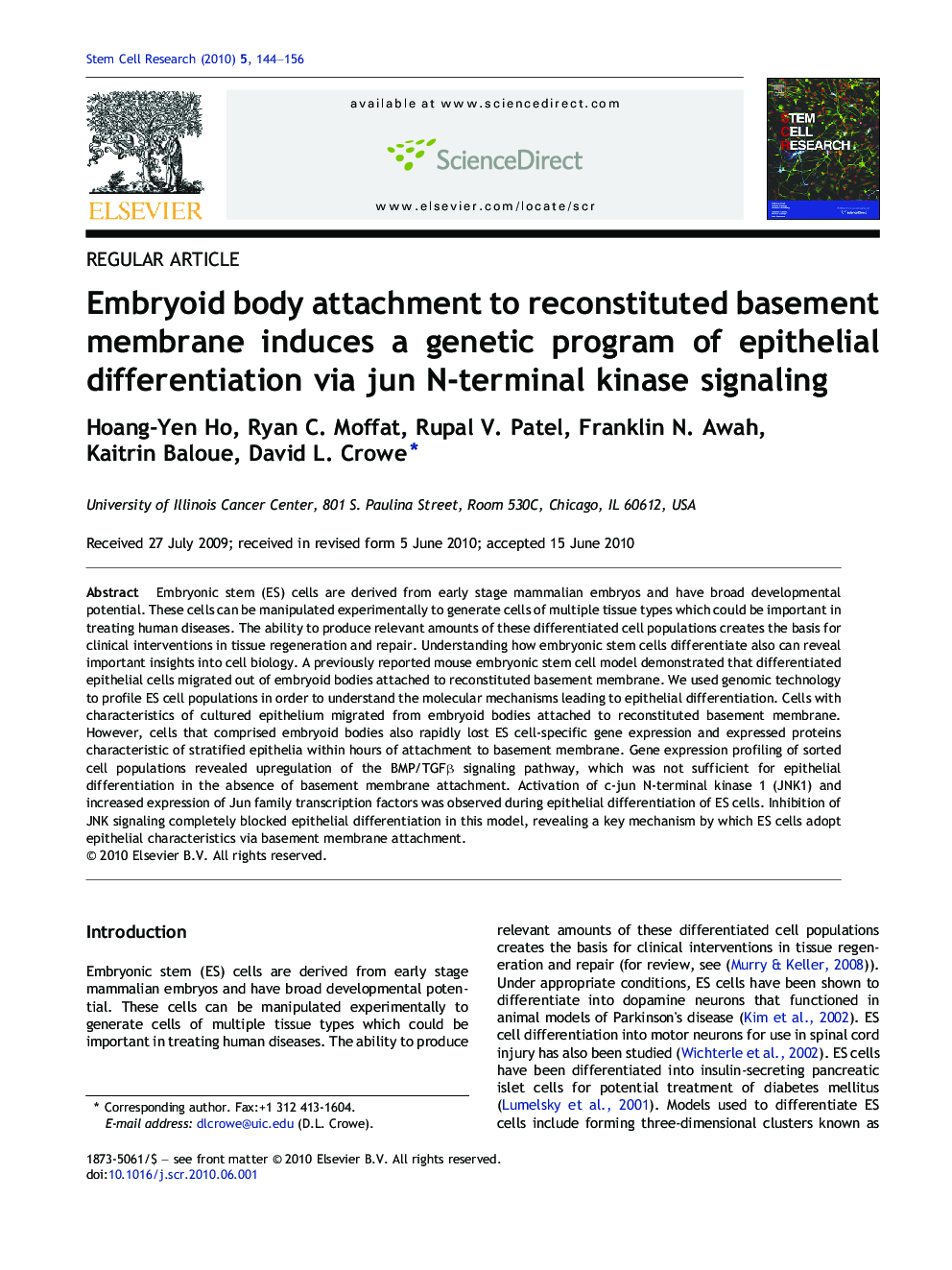| Article ID | Journal | Published Year | Pages | File Type |
|---|---|---|---|---|
| 2094362 | Stem Cell Research | 2010 | 13 Pages |
Embryonic stem (ES) cells are derived from early stage mammalian embryos and have broad developmental potential. These cells can be manipulated experimentally to generate cells of multiple tissue types which could be important in treating human diseases. The ability to produce relevant amounts of these differentiated cell populations creates the basis for clinical interventions in tissue regeneration and repair. Understanding how embryonic stem cells differentiate also can reveal important insights into cell biology. A previously reported mouse embryonic stem cell model demonstrated that differentiated epithelial cells migrated out of embryoid bodies attached to reconstituted basement membrane. We used genomic technology to profile ES cell populations in order to understand the molecular mechanisms leading to epithelial differentiation. Cells with characteristics of cultured epithelium migrated from embryoid bodies attached to reconstituted basement membrane. However, cells that comprised embryoid bodies also rapidly lost ES cell-specific gene expression and expressed proteins characteristic of stratified epithelia within hours of attachment to basement membrane. Gene expression profiling of sorted cell populations revealed upregulation of the BMP/TGFβ signaling pathway, which was not sufficient for epithelial differentiation in the absence of basement membrane attachment. Activation of c-jun N-terminal kinase 1 (JNK1) and increased expression of Jun family transcription factors was observed during epithelial differentiation of ES cells. Inhibition of JNK signaling completely blocked epithelial differentiation in this model, revealing a key mechanism by which ES cells adopt epithelial characteristics via basement membrane attachment.
